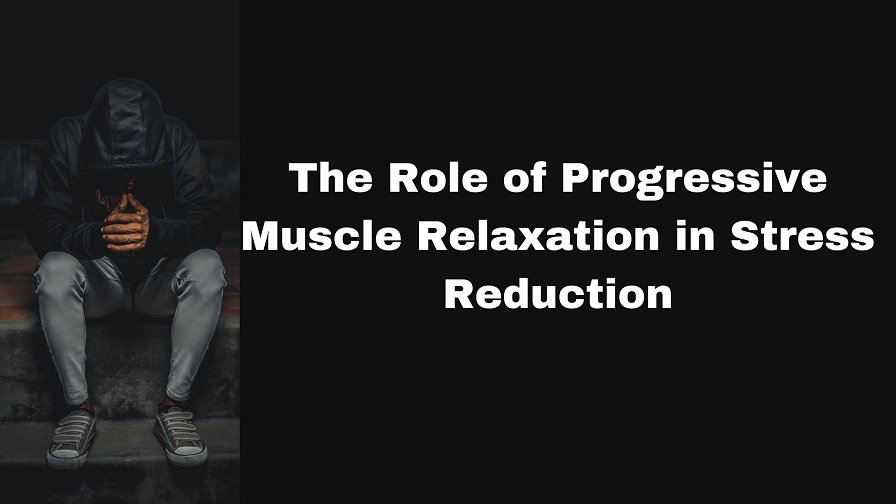The Role of Progressive Muscle Relaxation in Stress Reduction
In today’s fast-paced and demanding world, stress has become an inescapable part of our lives. Chronic stress can have detrimental effects on our physical and mental well-being, leading to a range of health issues such as anxiety, depression, cardiovascular problems, and weakened immune systems.
Fortunately, there are various techniques available to help manage and reduce stress levels, one of which is progressive muscle relaxation (PMR).
Progressive muscle relaxation is a simple yet powerful stress management technique that involves systematically tensing and relaxing different muscle groups throughout the body.
This mind-body approach, developed by American physician Edmund Jacobson in the 1920s, has gained widespread recognition for its effectiveness in promoting relaxation and alleviating the negative effects of stress.
Understand the Stress Response
To appreciate the role of progressive muscle relaxation in stress reduction, it is important to understand the body’s physiological response to stress. When faced with a perceived threat or stressful situation, the body activates the sympathetic nervous system, triggering the “fight-or-flight” response. This response prompts the release of stress hormones, such as adrenaline and cortisol, which prepare the body for action by increasing heart rate, blood pressure, and muscle tension.
While this stress response is beneficial in situations where immediate action is required, chronic activation of the stress response can have detrimental effects on physical and mental health. Prolonged muscle tension, a common symptom of stress, can lead to headaches, back pain, and other musculoskeletal issues.
The Mechanism of Progressive Muscle Relaxation
Progressive muscle relaxation works by systematically tensing and relaxing specific muscle groups throughout the body. By consciously contracting and releasing muscles, individuals become more attuned to the sensations of tension and relaxation, allowing them to identify and release areas of muscle tightness associated with stress.
During a progressive muscle relaxation session, individuals are guided through a series of exercises that involve tensing and relaxing different muscle groups, such as the arms, legs, shoulders, and facial muscles. As each muscle group is tensed and then released, individuals are encouraged to focus on the feeling of relaxation and the contrast between tension and release.
The benefits of progressive muscle relaxation are multifaceted:
Increased Body Awareness
One of the primary benefits of progressive muscle relaxation is an enhanced awareness of bodily sensations. By consciously tensing and relaxing muscles, individuals become more attuned to the subtle cues their bodies provide, enabling them to recognize and address physical manifestations of stress more effectively.
Reduction in Muscle Tension
Chronic muscle tension is a common symptom of stress, and progressive muscle relaxation directly targets this issue. By systematically releasing tension in various muscle groups, individuals can experience a profound sense of physical relaxation, alleviating the strain and discomfort associated with prolonged muscle tightness.
Physiological Stress Relief
Progressive muscle relaxation has been shown to counteract the physiological effects of stress by activating the parasympathetic nervous system, which is responsible for the “rest-and-digest” response. This activation helps lower heart rate, blood pressure, and respiration, promoting a state of calm and relaxation.
Mental and Emotional Relaxation
While progressive muscle relaxation primarily targets physical tension, its benefits extend to mental and emotional well-being. As the body relaxes, the mind often follows suit, leading to a reduction in anxiety, worry, and negative thought patterns associated with stress.
Incorporating Progressive Muscle Relaxation into Daily Life
One of the great advantages of progressive muscle relaxation is its accessibility and ease of practice. This technique can be practiced virtually anywhere, making it a convenient and practical tool for stress management in various settings, including the workplace, at home, or even during commutes.
Regular practice is recommended for optimal benefits, with many experts suggesting daily sessions lasting 10 to 20 minutes. However, even shorter sessions can provide immediate stress relief when needed. Progressive muscle relaxation can be practiced independently or guided by audio recordings, apps, or in-person instruction from a qualified professional.
Integrating Progressive Muscle Relaxation with Other Stress Management Techniques
While progressive muscle relaxation is a powerful stress reduction technique on its own, it can be even more effective when combined with other stress management strategies. For example, incorporating deep breathing exercises or mindfulness meditation practices before or after a progressive muscle relaxation session can enhance the overall relaxation experience and promote greater mind-body awareness.
Additionally, progressive muscle relaxation can be used in conjunction with cognitive-behavioral therapy (CBT) or counseling sessions to address the psychological aspects of stress and develop healthy coping mechanisms.
Adapting Progressive Muscle Relaxation for Specific Populations
While progressive muscle relaxation is a versatile technique suitable for most individuals, some adaptations may be necessary for certain populations. For example, individuals with physical limitations or mobility issues may require modifications to the tensing and releasing exercises to accommodate their abilities.
Similarly, individuals with certain medical conditions, such as chronic pain or injuries, may need to adjust the intensity of muscle tensing or focus on specific muscle groups to avoid exacerbating their symptoms. In these cases, it is advisable to consult with a qualified healthcare professional or therapist to ensure safe and effective practice.
Conclusion
Progressive muscle relaxation is a powerful and accessible stress reduction technique that offers numerous benefits for physical, mental, and emotional well-being. By systematically tensing and relaxing muscle groups, individuals can alleviate muscle tension, counteract the physiological effects of stress, and promote a deep sense of relaxation.
Incorporating progressive muscle relaxation into daily routines or integrating it with other stress management strategies can enhance its effectiveness and provide a comprehensive approach to stress management. As a simple yet profound mind-body practice, progressive muscle relaxation empowers individuals to take an active role in reducing stress and cultivating greater overall well-being.
In today’s fast-paced and demanding world, stress is an unavoidable reality. However, by embracing techniques like progressive muscle relaxation, we can equip ourselves with the tools to manage stress effectively, mitigate its negative impacts, and ultimately lead healthier and more balanced lives.

